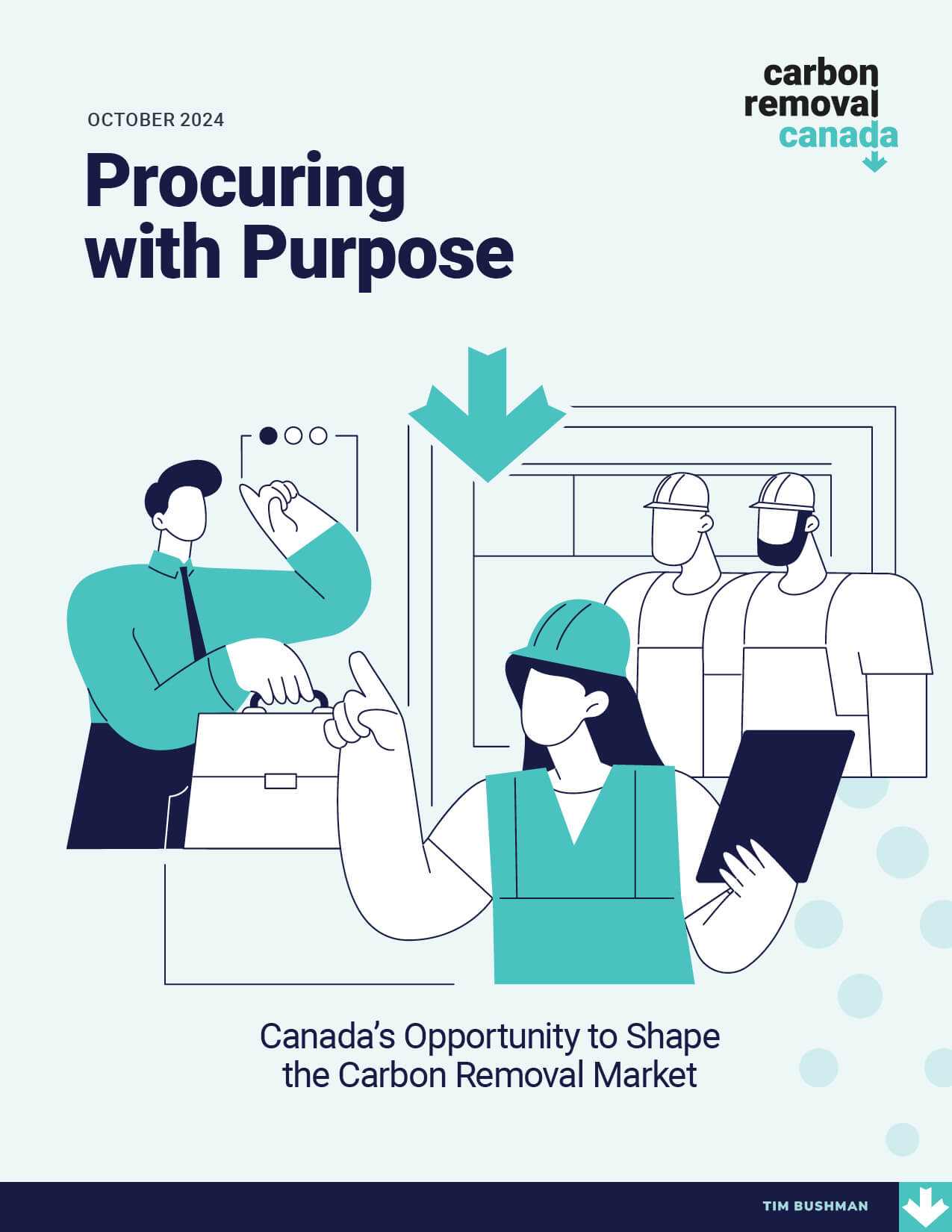In our first instalment of the Ready for Removal Series, we covered why carbon removal is necessary for creating a net-zero future. Beyond the climate benefits, investing in carbon removal solutions could also create hundreds of thousands of jobs and billions in gross domestic product (GDP).
What is carbon removal?
Carbon removal is the process of removing carbon dioxide (CO2) already in the atmosphere and storing it away for centuries or longer. Carbon removal is needed in addition to reducing emissions to create a net-zero future. Canada has committed to a net-zero future by 2050, which means that it needs to remove as many emissions from the atmosphere as it adds to it.
Addressing climate change is widely considered the largest economic opportunity of the current era. Canada is in a position to take advantage of this burgeoning market that would result in meaningful job creation and growth of Canada’s GDP. Additionally, doing so would position Canada as a leader in driving innovation in the green economy.
What makes Canada ideal for carbon removal
Canada has multiple strategic advantages that would allow it to implement and economically benefit from carbon removal solutions:
Natural Resources: To name just a few assets, Canada is home to the longest coastline in the world, the third largest forest area of any country, and contains ample agricultural land. These areas could serve as fertile ground for demonstration and commercial-scale projects across numerous carbon removal methods, enabling Canada to be a global deployment hub in this industry.
Clean Energy: By 2021, roughly 82 percent of the electricity generated in Canada already come from clean energy sources. Clean electricity is expected to continue growing over the coming decades to help achieve net-zero emissions. As such, Canada is better set up to generate the new clean power needed to build out carbon removal technology.
Geologic Storage: Canada has great potential for storing CO2 deep underground in its geologic formations. Most of this storage resource is located in saline formations across Saskatchewan and Alberta. For scale, this area alone is comparable to what some countries have for storage at a national level.
Skilled Workforce: Canada has a highly-skilled workforce across a range of sectors that possess the technical know-how to build large infrastructure projects and scale industries.
Research and Innovation: Canada is ranked among the top G7 countries for research and development and its ability to attract venture capital.
The economic benefits of carbon removal
To meet our net-zero future goal, Canada will need to have the capacity to remove at least 300 megatonnes of carbon annually by 2050 to account for residual emissions and begin tackling historical emissions. Pursuing carbon removal could create hundreds of thousands of high-quality jobs in Canada. Carbon Removal Canada’s Ready for Removal report estimates that in meeting this goal, 332,000 jobs (including permanent and temporary roles) could be created.
What are residual and historical emissions?
Residual emissions come from sources with no feasible way to cut new carbon emissions, mostly due to a current lack of affordable technology or high costs relative to compensating for those emissions with high-quality, durable carbon removal. Historical emissions refer to past emissions that continue to linger in our atmosphere and contribute to climate change.
This includes newly-created jobs in industries like construction, engineering, equipment, operations, transportation, energy and other manufacturing. While some jobs would only last during an initial investment-heavy phase, on an on going basis, roughly 89,000 permanent jobs would be created by 2050.
Removing one megatonne of CO2 per year created over 1,000 jobs (almost 1,800 jobs per megatonne facility during periods of construction). At this scale of job creation, the carbon removal industry would contribute over $460 million to Canada’s GDP.
An analysis by the Canadian Climate Institute suggests that the potential cumulative loss to GDP from negative climate impacts could be $25 billion from climate change by 2025.
However, by investing in carbon removal solutions, we can help Canada increase economic productivity. Carbon Removal Canada estimates that with a carbon removal industry removing hundreds of millions of tonnes of CO2 from the atmosphere, we could see an addition of $143 billion to GDP by 2050.
Why Canada needs to act now
This is a decisive decade that will determine the future of carbon removal in meeting climate goals by mid-century and beyond. By supporting carbon removal now, Canada will also be investing in future generations as the sector innovates and technologies become more affordable and more effective over time.
Policy development plays an important role at this early stage of the carbon removal industry. To harness the economic potential of carbon removal, federal, provincial and territorial governments must act swiftly to create a supportive policy and regulatory environment for the industry or risk Canadian innovators establishing operations and deploying projects outside of Canada. Canada must be a leader in this industry now to enable opportunities that benefit both the environment and our economy.
To learn more about why Canada is Ready for Removal, you can find the whole report below.







